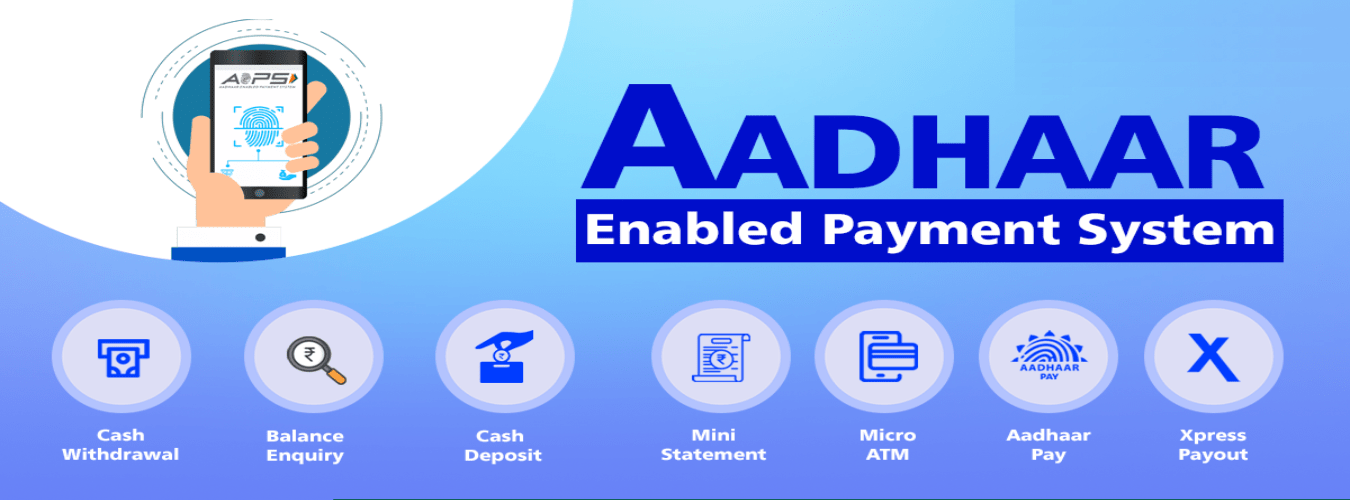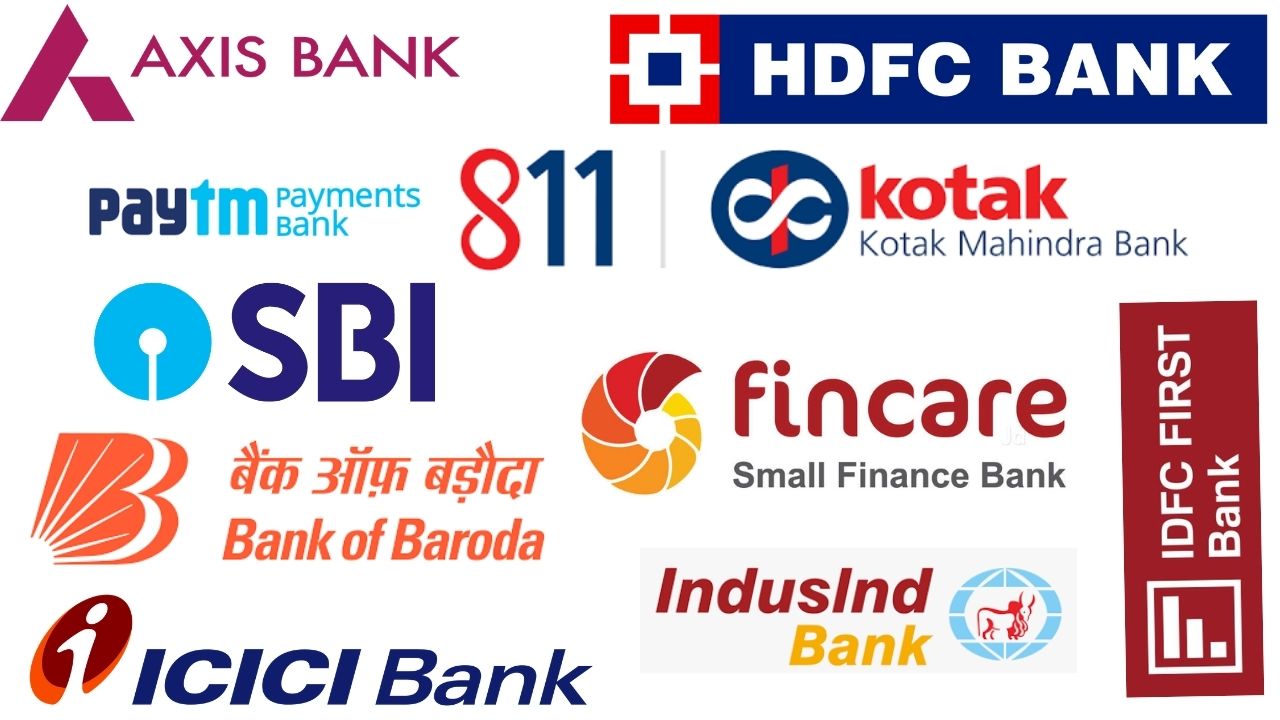AEPS stands for “Aadhaar Enabled Payment System”. It is a payment system that allows customers to make financial transactions using their Aadhaar number and biometric authentication (fingerprint or iris scan). AEPS is an initiative by the National Payments Corporation of India (NPCI) and is a part of the government’s Digital India program.
With AEPS, customers can perform basic banking transactions such as deposit, withdrawal, balance inquiry, and funds transfer, without the need for a physical debit card or a bank branch. All they need is their Aadhaar number and a biometric authentication device, which can be a fingerprint scanner or an iris scanner.
AEPS is a secure and convenient payment system that is especially useful for customers who live in remote areas and do not have easy access to traditional banking services. AEPS can also be used by business correspondents or banking agents who can provide these services to customers in their local communities.
Some of the benefits of AEPS include increased financial inclusion, reduced transaction costs, and improved efficiency and transparency in the banking system. AEPS is widely used in India and is becoming increasingly popular as a simple and reliable payment system for individuals and businesses alike.
There are several types of AEPS services that are available to customers. Some of the common AEPS services are:
- Balance Inquiry: This service allows customers to check their bank account balance using their Aadhaar number and biometric authentication.
- Cash Withdrawal: This service allows customers to withdraw cash from their bank account using their Aadhaar number and biometric authentication. This service is particularly useful for customers who do not have access to an ATM or a bank branch.
- Cash Deposit: This service allows customers to deposit cash into their bank account using their Aadhaar number and biometric authentication. This service is particularly useful for customers who live in remote areas and do not have access to a bank branch.
- Fund Transfer: This service allows customers to transfer funds from their bank account to another bank account using their Aadhaar number and biometric authentication.
- Aadhaar Seeding: This service allows customers to link their Aadhaar number to their bank account using their biometric authentication. This is a mandatory requirement for availing various government subsidies and benefits.
These are some of the common AEPS services that are available to customers. The specific services that are available may vary depending on the bank or financial institution that is offering the AEPS service.
To become an AEPS agent, you may need to provide the following documents:
- Business registration documents: This includes registration of your business as a legal entity with the government, which may include business licenses, tax identification numbers, and other registration documents.
- Bank account details: You will typically need to provide bank account details for your business, including the name of the account, account number, and the bank’s name and address.
- Professional indemnity insurance: Some financial institutions may require AEPS agents to have professional indemnity insurance to cover any liability that may arise from errors or omissions in their services.
- Office premises proof: You may be required to provide proof of your office premises, such as a lease agreement or utility bill.
- ID and address proof: You will need to provide proof of your identity, such as a passport or national ID card, as well as proof of your address, such as a utility bill or bank statement.
- Experience certificate: Some financial institutions may require AEPS agents to have a minimum level of experience in the financial services industry, and may ask for an experience certificate to verify your qualifications.
- AEPS training certificate: You may be required to undergo training on AEPS services and obtain a certificate of completion before you can register as an AEPS agent.
These are some of the common documents that may be required to register as an AEPS agent. It is important to check with the specific financial institution that you are interested in working with to determine the exact requirements for registration.
Money transfer refers to the process of sending money from one person or entity to another. It can be done through a variety of methods, such as bank transfers, wire transfers, online payment services, mobile money transfer, and cash transfers.
Money transfer services are commonly used for a variety of purposes, such as sending money to family or friends, paying bills or invoices, making online purchases, or sending money to another country.
Money transfer services typically involve fees and charges, which can vary depending on the service provider, the amount of money being transferred, and the destination country. Some services may also have limits on the amount of money that can be transferred in a single transaction or within a certain time period.
Money transfer services have become increasingly popular in recent years, especially with the rise of online payment platforms and mobile money transfer services. They offer a convenient and secure way to send money quickly and easily, without the need for traditional banking services.
To send money through a money transfer service, you typically need to provide the following details:
- Sender’s full name and contact information: You will need to provide your full name, address, phone number, and email address.
- Receiver’s full name and contact information: You will also need to provide the full name, address, phone number, and email address of the person or entity that you are sending money to.
- Amount of money to be transferred: You will need to specify the amount of money that you wish to transfer.
- Payment method: You will need to specify how you plan to pay for the transfer, such as using a bank account, credit card, debit card, or cash.
- Destination country and currency: You will need to specify the destination country and currency that the money will be transferred to.
- Purpose of the transfer: Some money transfer services may require you to provide information about the purpose of the transfer, such as paying bills, sending money to family or friends, or making a purchase.
- Identification documents: Depending on the service provider and the amount of money being transferred, you may be required to provide identification documents, such as a passport or national ID card.
These are some of the common details that may be required to send money through a money transfer service. The specific requirements may vary depending on the service provider and the destination country.
A loan is an arrangement in which a lender provides money, property, or other assets to a borrower with the understanding that the borrower will repay the loan amount with interest or other charges over a specified period of time. Loans can be used for a variety of purposes, such as financing a home, purchasing a car, or starting a business. Loans can be obtained from banks, credit unions, or other financial institutions, and the terms and conditions of the loan are typically set out in a loan agreement. The terms of a loan typically include the loan amount, interest rate, repayment schedule, and any fees or penalties that may apply.
There are many different types of loans available, and each type of loan serves a specific purpose. Some common types of loans include:
- Personal loans: These are unsecured loans that are typically used for personal expenses such as home improvements, medical bills, or debt consolidation.
- Mortgage loans: These are secured loans used to purchase a home or other real estate. The property serves as collateral for the loan.
- Auto loans: These are secured loans used to purchase a vehicle. The vehicle serves as collateral for the loan.
- Student loans: These are loans used to pay for education expenses such as tuition, fees, and books.
- Business loans: These are loans used to start or grow a business. They may be secured or unsecured.
- Payday loans: These are short-term, high-interest loans that are typically due on the borrower’s next payday.
- Secured loans: These are loans that require collateral, such as a home or car, to secure the loan.
- Unsecured loans: These are loans that do not require collateral, but often have higher interest rates than secured loans.
- Lines of credit: These are loans that allow borrowers to access a pre-approved amount of funds on an as-needed basis, similar to a credit card.
- Debt consolidation loans: These are loans used to consolidate multiple debts into one loan with a lower interest rate and monthly payment.
The specific documents required to apply for a loan can vary depending on the type of loan and the lender’s requirements. However, some common documents that lenders may request when you apply for a loan include:
- Identification: You will typically need to provide a government-issued ID, such as a driver’s license or passport, to verify your identity.
- Proof of income: Lenders will want to see that you have a steady income to repay the loan. This may include recent pay stubs, W-2 forms, or tax returns.
- Employment verification: Some lenders may also want to verify your employment status with your employer.
- Credit report: Lenders will review your credit report to determine your creditworthiness. You can obtain a free copy of your credit report from each of the three major credit bureaus (Equifax, Experian, and TransUnion) once a year at AnnualCreditReport.com.
- Bank statements: Lenders may ask for several months’ worth of bank statements to verify your income and expenses.
- Collateral documentation: If you are applying for a secured loan, such as a mortgage or auto loan, you will need to provide documentation to verify the value of the collateral, such as a home appraisal or vehicle title.
- Business documentation: If you are applying for a business loan, you will need to provide documentation such as a business plan, financial statements, and tax returns.
It’s always a good idea to check with the specific lender you are applying with to determine exactly what documents they require for the loan application.




